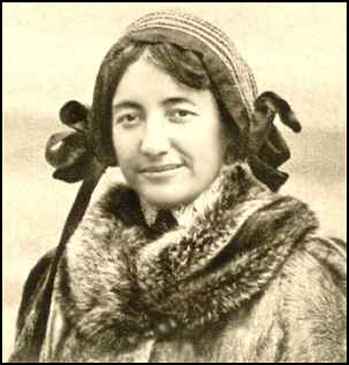
1875-1963 |
 |
|
Photo From Collection of Jean-Pierre Lauwers |
|
by David Lam 1901 - first balloon flight 1907 - July 19, First balloon flight as pilot 1908 - Not being allowed to participate in the tour de France, (it was a man's sport, after all), she nevertheless rode the course after the race, and completed it, which only a few more than 30 of the more than 100 male starters had done. 1909 - September, First flight in balloon alone 1909 - September, First fixed wing flight, with Roger Sommer 1909, Oct. 26, First female pilot to fly a balloon across the North Sea and the English Channel from Europe to England. 1909-1910 - Won several ballooning prizes. 1910, - Studied fixed wing aviation with Hubert Latham, in the Antoinette airplane-- at least one journal credited her with being the first woman to solo a monoplane. 1910 - June, Got her Balloon pilot's license from the Aero Club of France (#145) 1910 - Proposed the development of airplane ambulances to the French Government 1910 - Nov. 8, Became the third woman in the world licensed as a pilot (#281) 1911 - Won the Coupe Femina in Turin |
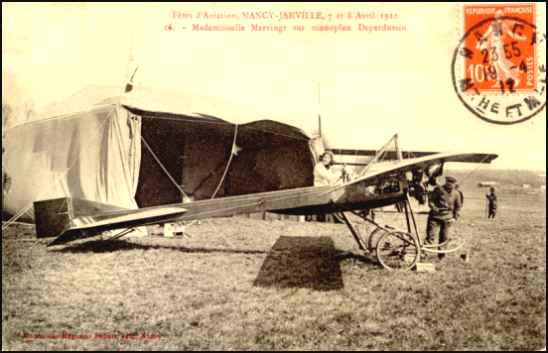 |
|
16. - Mademoiselle Marvingt sur monoplan Deperdussin Collection of Jean-Pierre Lauwers |
 |
|
Marie Marvingt prend le départ a Béthany en 1912 sur Deperdussin Photo Courtesy of David Lam |
| 1912 - Actually ordered an airplane ambulance from the Deperdussin company |
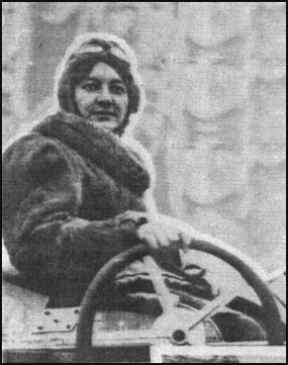 |
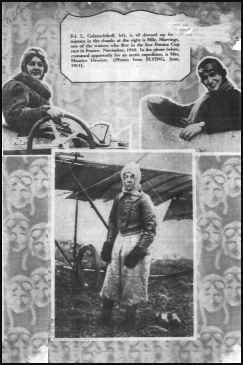 |
|
Photo from FLYING, June 1913 Collection of David Lam |
At the Left is Mlle. Marvingt, one of the women who flew in the first Femina Cup in France, November 1910.
Frl. Galantschikoff, right, is all dressed up for sojourn in the clouds; In the photo below, costumed apparently for an arctic expedition,
is Hilda Hewlett. |
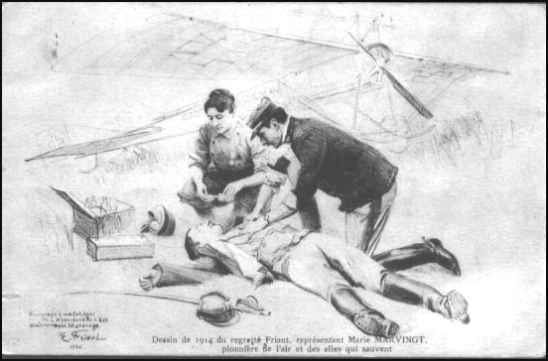 |
|
Pionnière de l'air et des ailes qui sauvent. Photo Courtesy of David Lam |
|
1914 - Appeared in a painting by Friant showing her air ambulance (see picture above from an old postcard) 1914 - Enlisted in the French Army and served on the front lines as a male infantryman. WWI, served as red cross nurse 1915 - Served as volunteer pilot flying bomber missions over Germany. Worked as war correspondent with French Forces in North Africa between the wars. Devoted the remainder of her long life to the concept of aeromedical evacuation, giving more than 6,000 conferences and seminars on the subject on at least four continents. Co-Founder of the French organisation Les Amies De L'Aviation Sanitaire (Friends of Medical Aviation). One of the leaders behind the success of the First International Congress on Medical Aviation, 1929 - Participated in too many international meetings to list here. Received award from the Federation National d'Aeronautique at the Sorbonne, for her work in aviation medicine-- 30 Jan 1955. Film Director, author and actress-- 2 films 1934-1935 Established civil air ambulance service in Morocco-- Given Medal de la Paix of Morocco. Invented the metal ski. At the age of 80, flew in a US jet . 1955 - At the age of 80, learned to fly a jet helicopter. |
|
by Marie Marvingt Collier's Magazine, 30 September 1911 Transcribed by David Lam, 1-9-04 On October 1, 1910, in the evening, I made one of my finest flights. I flew alone for the first time in a wind that was fairly strong, with violent currents. On the morning that I won my pilot's certificate, during the second test, a biplane flew off 60 meters from me. I left the course in order to avoid its wake and rose to a height of 80 meters. But for nearly the whole circuit of the course I failed to distinguish it. I called to mind, during those moments, the catastrophe that befell Dickson Thomas. My companions told me afterwards that we were at one moment within 20 meters of one another. With the new sloping wing, this inconvenience will no longer exist. But I find that I am speaking to you of several flights without having yet notified you which was the most stirring. It was beyond all dispute the first that I made alone in my Antoinette, on the 4th of September 1910. For a long time past I had had complete control of the machine with my last teacher, Laffont. I had as much confidence as a learner can have. But, in spite of that, I felt a very unusual and strange sensation. There was a little wind, and I at once rose to a height of 60 meters. The monoplane climbed far better than the one I usually rode in. The first turn caused me real uneasiness, which, at the second, was turned into joy unalloyed. I was rather nervous about coming to earth, but my landing was quite normal. It was done: I had flown. This new sport is comparable to no other. It is, in my opinion, one of the most intoxicating forms of sport, and will, I am sure, become one of the most popular. Many of us will perish before then, but that prospect will not dismay the braver spirits. In devoting themselves to the new cause, those who have the true aviator's soul will find in their struggle with the atmosphere a rich compensation for the risks they face. It is so delicious to fly like a bird! " |
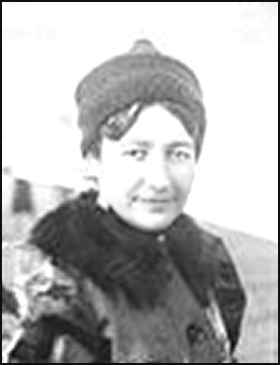 |
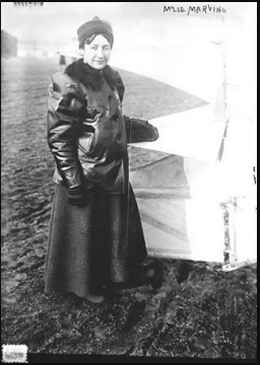 |
|
Library of Congress Collection, 1-28-07 |
|
by Dr. David M. Lam, M.D., M.P.H. This article was published in Aviation, Space and Environmental Medicine, 2003; 74 (8) 863-868 August 2003, the monthly journal of the Aerospace Medical Association (ASMA). Copies of the complete article may be obtained from the Ingenta website. You may go directly to the entry by clicking on: |
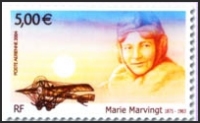 |
|
There will be an exhibition on Marie in Tomblaine, a town near Nancy, on 29 June--- the date of first day of issue of the new French air mail stamp in her honor. Just for information, the French Aviation and Space Medicine Society (SOFRAMAS) and the US Aerospace Medical Association have created an annual award in honor of Marie Marvingt. The award is to be given for “excellence and innovation in aerospace medicine”, and was first awarded in May 2005 |
|
via email from David Lam, 2-20-07 Marie Marvingt was inducted into the Women in Aviation International Pioneer Hall of Fame on 17 Feb 2007. Dave |
|
Marie Marvingt died on December 14, 1963, the most decorated woman in the history of France.
She was awarded more than 34 medals and decorations. It is unfortunate that she is so unknown. She was a fantastic lady, and contributed greatly to the history of aviation and to the development of the airplane ambulance. Editor's Note: If you have any information on this pioneer aviator please contact me. E-mail to Ralph Cooper |


|